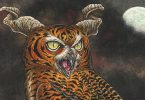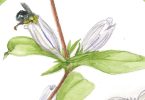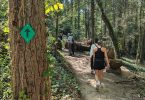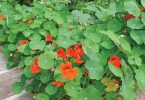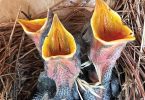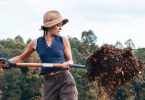By Elaine Smyth
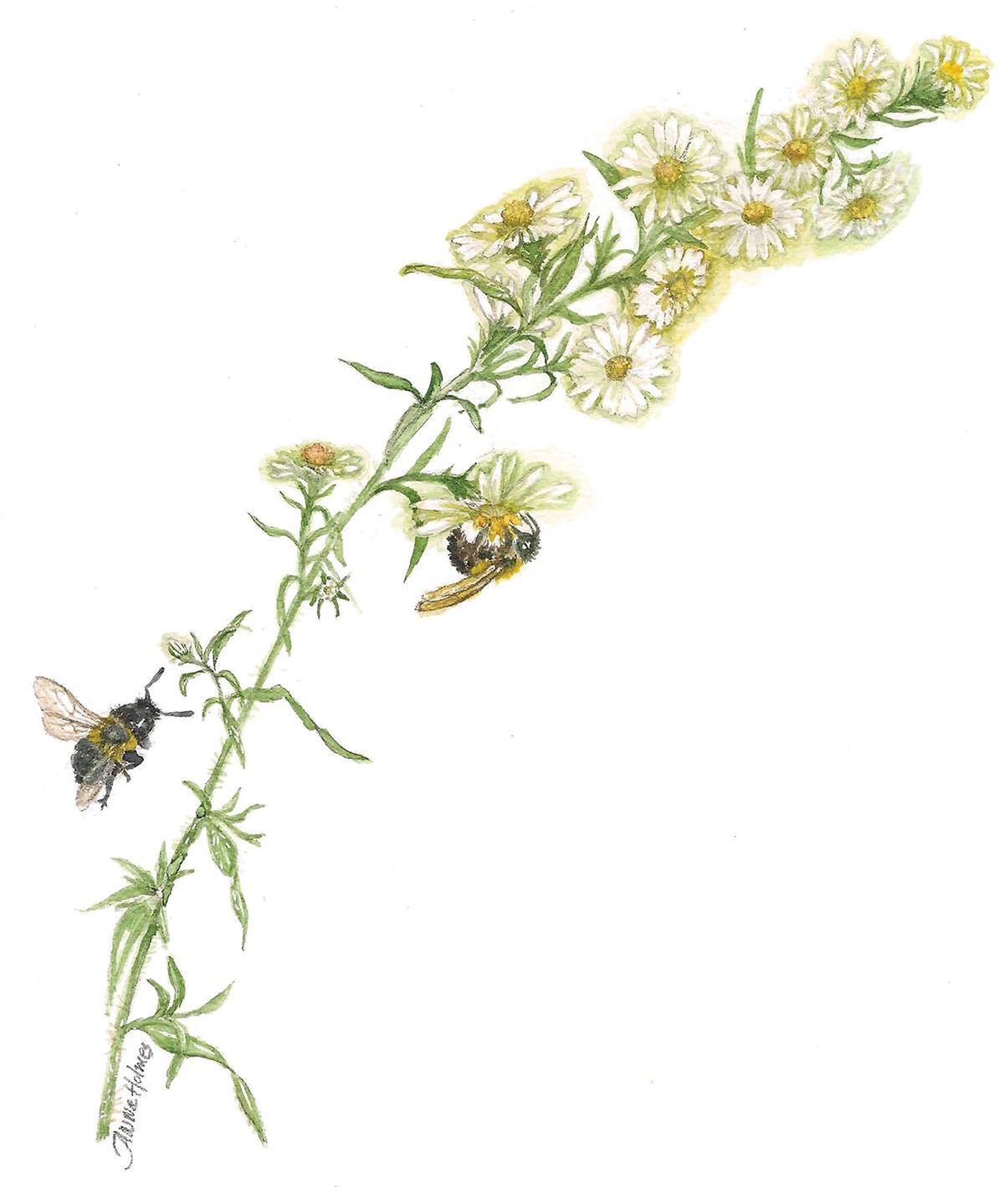
Anne Holmes, artist
As the world of herbaceous perennials sinks into sleep in November, the gardener has only a few native plants still in flower to feed pollinators. Reliable and showy, the Frost Aster, Symphyotrichum pilosum, is chief among them. With its gracefully branching sprays of small, daisy-like flowers, Frost Aster attracts and feeds many late-season pollinators, including migrating butterflies and ground-nesting bumblebees.
A widespread native of North America, Symphyotrichum pilosum can grow up to four feet tall and equally as wide. The flowers have yellow centers, sometimes reddish as they age, surrounded by many white ray florets that may have a bluish tinge. The stems have needle-like leaves and tend to be stiffly erect, emerging from a woody crown supported by fibrous roots. The foliage is covered with fine hairs, giving it a hoary appearance—hence its common name. It’s sometimes also called “old field aster” due to its habit of growing in disturbed areas.
In the garden, Frost Aster responds well to being cut back to encourage bushy growth, but the arched sprays that occur naturally on “unedited” plants are also beautiful in a naturalized setting. It is an aggressive plant, spreading both by rhizome and self-seeding. If you’d like to grow it, seed is easy to come by; check out any waste space or the edges of unkempt parking lot and you’ll likely find a specimen. It prefers full sun, but it’s not picky about soil or moisture, often thriving in harsh conditions.
If you’ve treated Frost Aster as an unwanted weed before, please consider keeping a few specimens in the garden next year. You’ll enjoy the visitors that the flowers attract in the fall and into winter: after they’ve finished blooming, the seed heads provide visual interest in the garden and feed our wintering birds.
Upcoming Events at Asheville Botanical Garden
Winter Woody Ethnobotany, with Marc Williams ~ Sunday, November 2, 1–4 p.m.
Join ethnobotanist Marc Williams for a 3-hour workshop on identifying plants in winter.
Pruning for the Natural Gardener, with Alison Arnold ~ Saturday, November 8, 10 a.m. to noon
Explore basic pruning principles with a classroom presentation, discussion and demonstration in the Garden.
Pamper Your Pollinators This Winter, with Keith Aitken & Phyllis Stiles. Certified Pollinator Advocate Series ~ Tuesday, November 11, 6–7:30 p.m.
Learn how tree leaves and plant stems nurture pollinators year-round and how to have a tidy yard—with lots of fallen leaves!
Learn more and register online via the Asheville Botanical Garden website at AshevilleBotanicalGarden.org.
Visitors Center/Garden Path Gift Shop Holiday Hours: 10 a.m. to 4 p.m. daily through December 21. Featuring local artists and artisans, garden-themed gifts, tools and books, the gift shop is managed and staffed by volunteers. All proceeds benefit the Garden.
Asheville Botanical Garden, 151 W.T. Weaver Boulevard, is an independent nonprofit garden including more than 750 species of native plants in a 10-acre naturalistic setting. Our mission: to promote and showcase the value and diversity of plants native to the Southern Appalachian region by serving as an educational resource and urban destination for nature study and enjoyment. Supported by members, donors and volunteers, the Garden is free to all. Open daily from sunrise to sunset.

